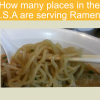Kani (crab)

With over 5000 types of crab on our oceans, around 1/5 are found in and around Japanese waters. Despite these numbers, only a handful are used in Japanese food.
Swimming Crab
The "swimming crab" or "Watari Gani/Gazami" as it's known in Japanese, is a common species found off the coast of Japan, Korea, and China. The reason they are known as the "swimming crab" is because they are pretty good swimmers, for a crab that is - their hind legs resemble flippers. During the winter months, the pregnant female of this species is considered a delicacy.
Horsechair crab
The "Horsechair crab" or "Kegani" is a slow growing, hairy creature taking five years to fully mature. A regional delicacy of Hokkaido (especially during the winter), the Kegani can be found in various waters. They can be captured in the northern part of the Pacific coast, the eastern coast of Russian across to Alaska, and of course, in the Sea of Japan. The "Snow/Queen crab" or "Zuwai Gani" is another winter delight found in the Sea of Japan.
Snow Crab
The snow crab has long legs full of tasty meat. The legs of a full grown male can reach 32 inches! As opposed to the Kegani, the Zuwai Gani needs roughly 10 years to reach maturity.
Finally, we have the infamous Alaskan King Crab, or "Taraba Gani." In Japanese, Taraba Gani means "cod fishing crab." Approximately a century ago, fishermen carelessly let a cod net sink to the sea floor and unintentionally caught these amazingly tasty creatures. Despite it's name, the Alaskan King Crab is easily the most sought after crab in all of Japan, perhaps the world. Ironically, it's actually part of the hermit crab family! A large male can be 12 inches wide and over 22 lbs, with legs spanning an incredible 3 feet from tip to tip. Like the other popular crabs in Japanese cuisine, the Alaskan King crab grows slowly. It can be found in cold water in Japan all the way to the coast of Canada.





